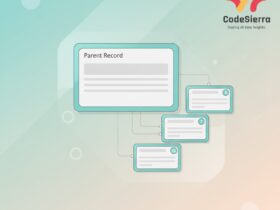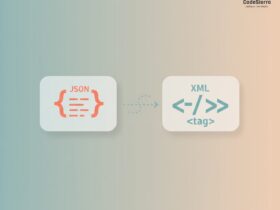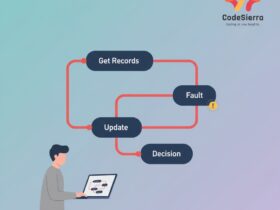Context
You create two Account records in Salesforce: a1 and a2. You set a2 as the parent of a1 (i.e., a1.ParentId = a2.Id). Then you try to make a1 the parent of a2 (i.e., set a2.ParentId = a1.Id). What happens?
Short Answer
Salesforce prevents circular parent-child relationships. If you attempt to make a1 the parent of a2 after a2 is already the parent of a1, the platform will block the change and return a validation/API error. Salesforce enforces the Account hierarchy as a directed acyclic graph (a tree), so cycles are not allowed.
Why Salesforce blocks this
Allowing a parent-child cycle would create an infinite loop in hierarchy traversals (ancestors/descendants) and break assumptions used by UI features (Parent Account, Account Hierarchy), sharing calculations, rollups, and many system operations. To keep data integrity and ensure predictable behavior, Salesforce enforces a strict non-recursive parent chain.
How the error appears
– In the Salesforce UI: You will typically see an error message when saving the Account record that indicates a recursive/circular relationship is not allowed.
– Via API (SOAP/REST) or Apex: The save/update will fail with an error indicating a recursive relationship or invalid ParentId update. The exact wording can vary across releases and APIs, but the effect is the same — the transaction is rejected.
How to detect and prevent circular references programmatically
If you need to enforce or proactively detect potential cycles (for bulk updates, integrations, or user-friendly messages), add a server-side check (Apex trigger or before-save flow) that walks the parent chain and ensures the new parent is not a descendant of the current record.
Example: simple Apex pre-check (conceptual)
// Pseudocode - do NOT paste to production without testing
for (Account a : Trigger.new) {
Id newParentId = a.ParentId;
if (newParentId == null) continue;
// Walk up the parent chain from newParentId and look for the current account Id
Id cursor = newParentId;
while (cursor != null) {
if (cursor == a.Id) {
a.addError('Cannot set parent: this would create a circular account hierarchy.');
break;
}
// Query parent of cursor
Account p = [SELECT ParentId FROM Account WHERE Id = :cursor LIMIT 1];
cursor = p.ParentId;
// Optional: add safety counter to avoid infinite loops
}
}
Notes:
– Use bulk-safe patterns: avoid one SOQL per loop. Instead, collect parent Ids and fetch multiple accounts in batches, then iterate in memory.
– For very deep hierarchies or large data volumes, implement an iterative algorithm that loads parent levels in chunks to stay within governor limits.
Best practices
- Enforce checks in a before-insert / before-update Apex trigger or a server-side Flow to block cycles.
- Provide clear UI validation messages so users understand why the save failed.
- When doing data loads, validate parent chains in your ETL/pre-processing step to catch cycles before sending to Salesforce.
- Consider storing computed hierarchy metadata (e.g., depth, ancestor list) if you need fast ancestor/descendant queries — but ensure the metadata update logic prevents cycles.
Keywords
Salesforce account hierarchy, circular parent relationship, ParentId, recursive relationship, Apex trigger, account parent-child, data integrity










Leave a Reply